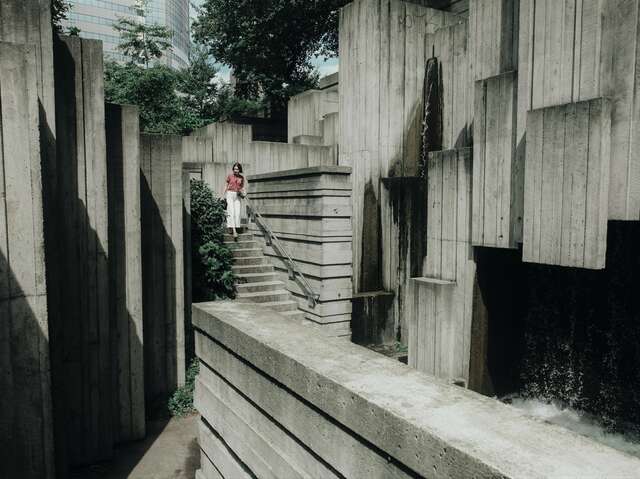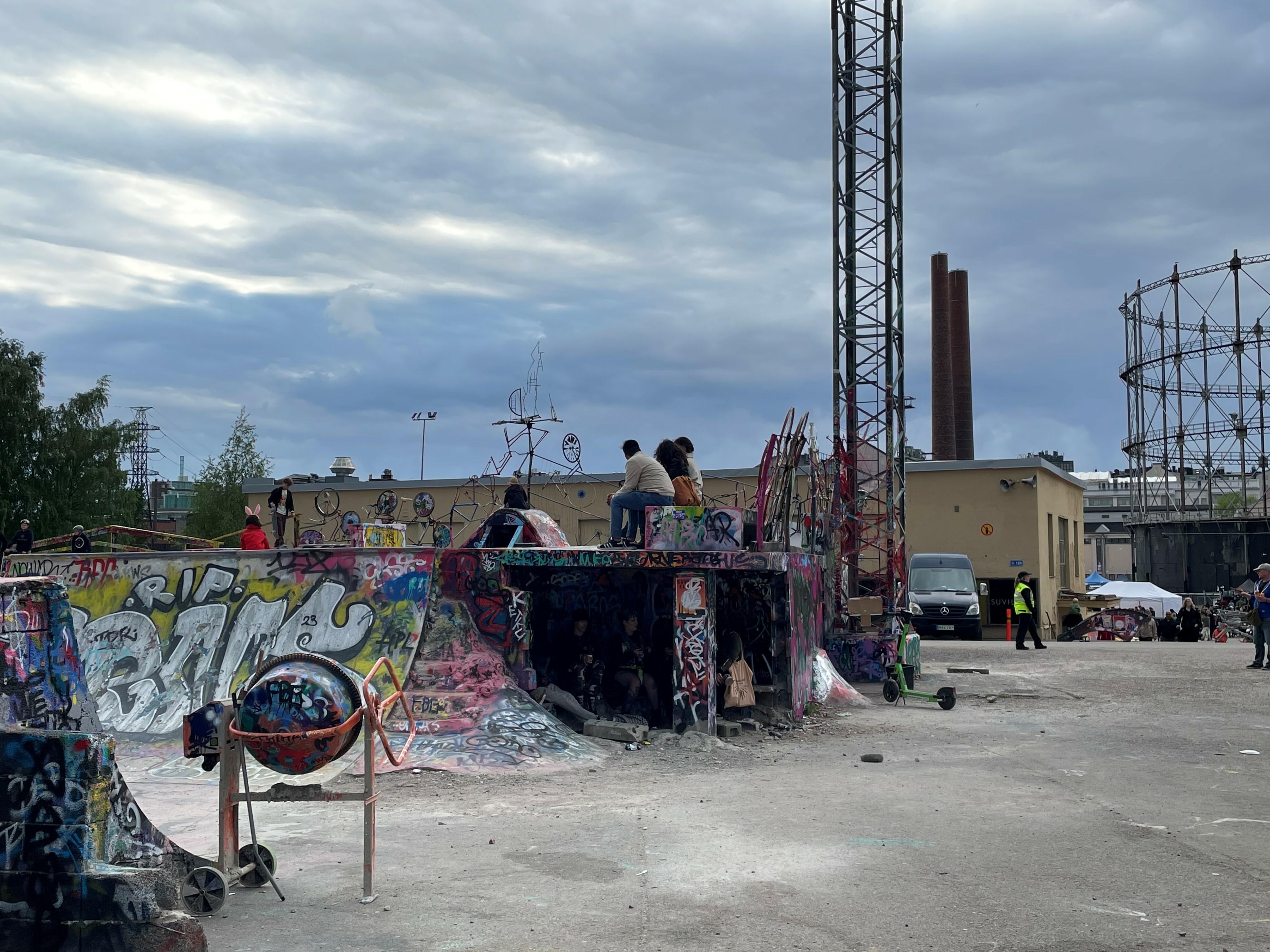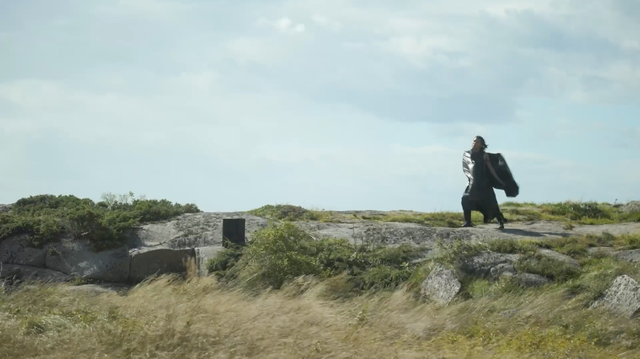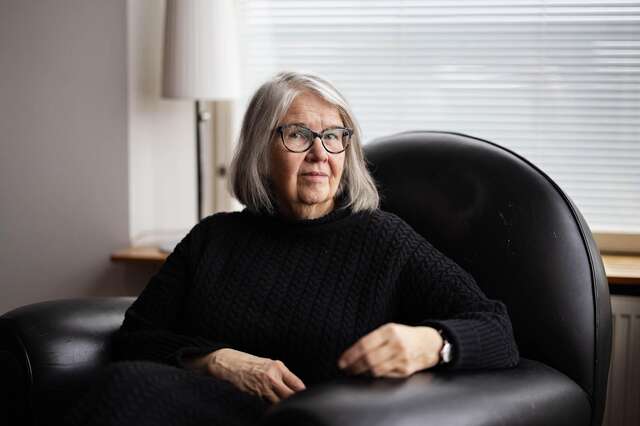Irina Garnets’ diploma thesis analyses otherness and emptiness in the built environment

The Oulu University graduate Irina Garnets wrote a collection of five essays, “Schisms – essays on spaces for other”, which was shortlisted for the 2023 Wuorio Award for best diploma theses. The essays analyse the concept of otherness and the role of emptiness in its occurrence.
Otherness is something awkwardly fitting, a different specie, a different way of being, a different aesthetic or a different way of expression. To emerge in space or as a space, otherness needs a passage to appear. Moments of physical emptiness or diminished order invite novelty to intrude and alter the dynamics of space. This relation between otherness and emptiness is discussed using concepts from philosophy, architectural theory, geography, and political theory. Through the analysis, I render for myself a strategy, sort of an ethical position, on how to design spaces for other.
Finding value in difference as a positive and imperative aspect of space is crucial to the wider premise of the diploma thesis. Diversity and the right to existence are primary concepts of democracy, where coexistence challenges us to consider views other than our own. As in philosopher Emmanuel Levinas’ analysis of Otherness, the other that portrays itself as different deconstructs the totality of the subjective (Levinas 1969). For architecture, it deconstructs the totality of authorship of architectural design.
Space is the dimension of the world we live in, where social and physical interactions push and pull our trajectories in it. With its “lines”, architecture borders, opens and closes the physical and social, being a significant rule compiler in the organisation of space. In the recognition of otherness, the architectural design takes a more facilitating role and leaves some things up to exterior interruption. Architectural space of difference is the host for unexpected guests.
In the essays, I argue that emptiness as a condition of diminished order is a focal point in the counter-hegemonic activity. Emptiness appears as a pore that allows the existing relations to take a sudden twist, an alteration in dynamics. Leaning on temporality, the unconsolidation of power, it includes unexpected intersections, agonies and schisms. The dialogue of differences requires recognition and deconstruction of physical and social structures affecting the space that repel or include otherness. And further, it leads to the transcendence of the limits of boundaries, the production of an other space.
Essentially, emptiness constructs the network of porosity as a space of appearance that sustains democratic activity. As Hannah Arendt’s concept “space of appearance” refers to the space where people are allowed to appear in their plurality and unpredictability (Arendt 1958). These moments of absence of physical or social restriction, of undogmatic architectural space, may become vital agents as stages for politics to level power and novelty to emerge.

Pores in stiffer tissue, as moments for difference, become thresholds for the range of activities and their periods. Spatially such conditions provoke a subjective take on how to take on space. As a space of uncertainty, it is defined by the temporality of actions and definitions. These spaces are characterised by interaction and negotiation in the process of being.
The concept of emptiness includes the liberty to move and appear, but at the same time, it poses challenges in the identification of ownership or explicit action and is threatened to become indifferent and overruled. As a condition of ambiguity without a sole clear function, it becomes programmeless and lacks monetary value in the eyes of the economic system. Despite active use or importance for the users, these spaces seldom survive the attention of official or commercial actors, underlining the aching intolerance of Western society and system towards undetermined liberty. Essentially the emerging others create a state of multiplicity where the individual fragments deconstruct capitalism on its terms.
The idea of a designer to actively analyse its limits of power is focal in the detotalisation of space. Space for other requires an ethical stance to respect what is outlined outside of us and to recognise or facilitate self-sufficient appearances. The challenge is to balance between generative actions and sustaining the freedom of other. Not to do less but little, as a way to catalyse more.
Sources: Arendt, Hannah. 1958. The Human Condition. Chicago: The University of Chicago Press.
Levinas, Emmanuel. 1969. Totality and Infinity: An Essay on Exteriority. Duquesne University Press.
Irina Garnets graduated from the Department of Architecture at the University of Oulu in May 2022, under the supervision of Aulikki Herneoja. Irina Garnets is currently working with ILO Architects on housing design and historical surveys.
"Theoretical reflection provides interdisciplinary perspectives and a starting point for design principles. Through theory, I aim to observe and bring out through design the interfaces and parallels of difference; the intersection of time, function, styles and materials."


